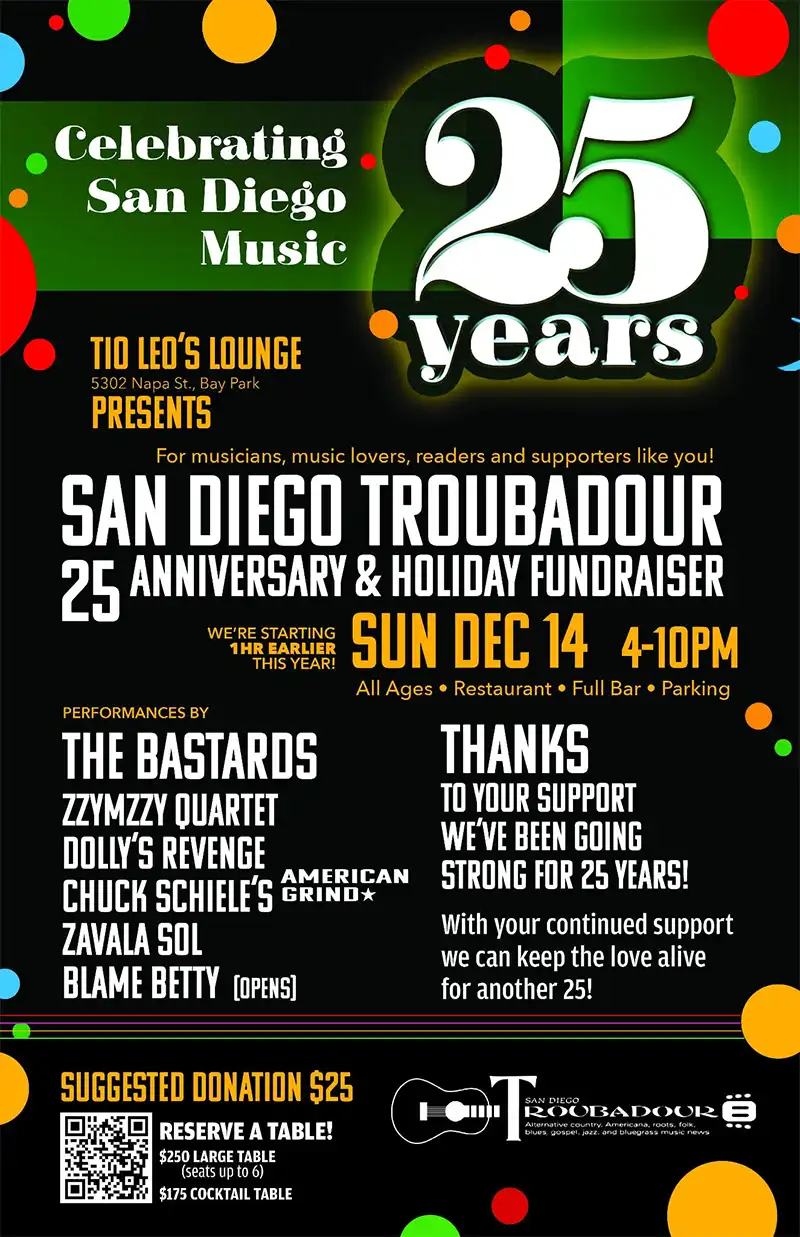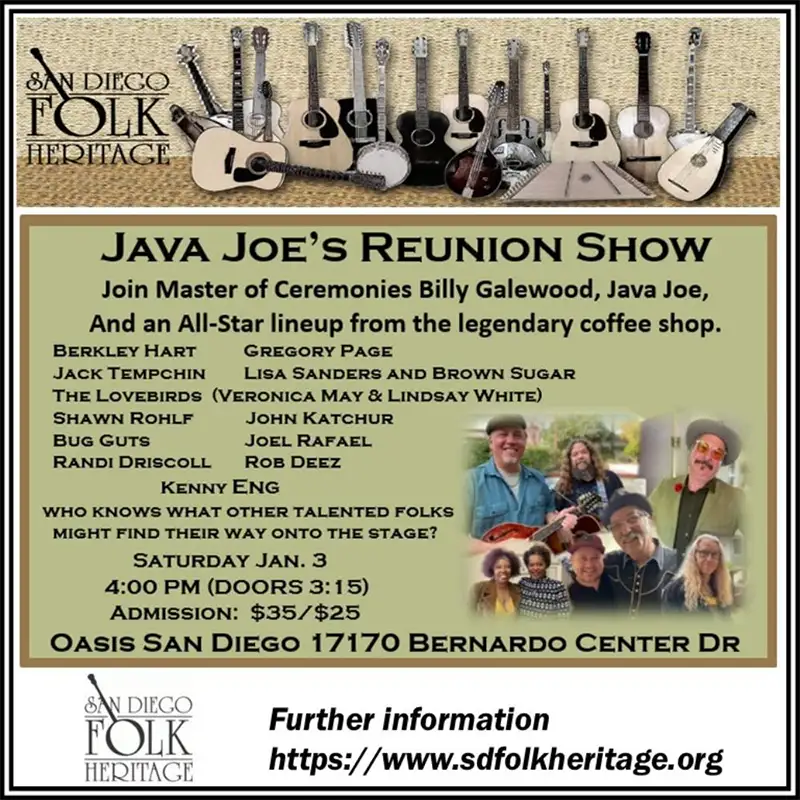Ask Charlie...
NAMM 2016 Observations
Hello Troubadourians! Every year during the third week of January, the NAMM Show comes to the Anaheim Convention Center. This is where nearly every company that creates and manufactures musical instruments and supporting products, or that has found a way to monetize their musical product or service, descends upon Southern California to show their wares and hopefully interest music merchants from around the world to buy and stock their offerings. That’s the intent at least. For a lot of folks its an opportunity to check out gear that they might never otherwise see, touch, or hear, and for others it’s a four-day celebrity meet and greet as there is never a shortage of famous (and pseudo famous) musicians either in attendance or making scheduled appearances at the booths of the companies with whom they have an endorsement deal. Endorsements are big business for gear companies and artists alike. The companies believe that they will sell more gear by having a famous player appear in an advertisement holding their product, and the artists either receive free gear or custom-made “signature” instruments; some even derive a significant portion of their income by “selling” their image and so-called clout in the hope of influencing players to buy “this brand” over “brand X.” I guess it works because it’s been part of the business for as long as anyone can remember. Traditions in the music industry are hard to establish, but once established are even harder to break. This is particularly true of musical instrument builders–especially those who build guitars. There are “rules” that nearly everyone follows when designing–or copying–instruments of all types, essentially falling into lock-step with what has been done before.
Now, some of what has been done before is awesome and legendary and should be adhered to if you are trying to recreate the past. But what about bending the “rules” a little or a lot to create something new? Or even just a unique variation on an established theme? Some builders will make their guitars look unique either by tweaking the shape, finish, or features of the traditional instrument that serves as the inspiration for their design but in reality they essentially clone all of the functional specifications methods of the original. For instance; Gibson-type guitars such as the Les Paul and ES335 models have always had a scale length of 24.75″. Virtually every builder that makes a Gibson-inspired instrument will build their guitars with the same scale length. Likewise, Fender-type guitars such as Stratocasters and Telecasters have always has a 25.5″ scale length, and cloners of those iconic instruments will inevitability produce their instruments with the same scale length. Why? Because that is the established tradition and everyone is convinced that players won’t buy any instrument that strays too far from the traditional platform. I can sort of understand that mentality. Everyone wants to be accepted by their peers and musicians are especially vulnerable to peer pressure. They also want to be accepted by the audiences that they perform for and if you are playing an instrument that is too far removed from the tradition, they may not take you seriously. Even though music is a listening art, we all too often hear with our eyes, which puts pressure on performers to conform to expected norms of whatever musical genre they are presenting. A jazz musician is going to get a lot of funny looks (and probably fewer funny comments) if he were to show up to a gig with a Telecaster instead of an archtop guitar, and you probably wouldn’t bring a Gibson Flying V and a Marshall half-stack to a country gig even if you were able to get exactly the perfect tone for ether gig with the gear you brought. Why? Because those gear choices are non-traditional so we perceive them as wrong.
So, there are physical specifications used in traditional guitars that nearly everyone follows: for Gibsons, they are a 24.75″ scale, 3+3 tuners on the headstock, a tune-o-matic bridge and stop tailpiece, humbucking pickups, and a conservative finish color. For Fenders, they are a 25.5″ scale, six on a side tuners with straight string pull, single coil pickups and a string through the body bridge for Telecasters and a spring-type vibrato bridge for Stratocasters. Now, I realize that I am painting with a rather broad brush and that there are exceptions, but in general these rules apply to the majority of instruments built on the traditional design platforms I’ve described. There are notable exceptions–PRS Guitars being one–that have created hybrid designs that drink equally from both the Gibson and Fender fountains and have in the process become equal to, of not superior to, the traditional designs. The specifications of the PRS design fall in-between the Gibson and Fender guitars, featuring a 25″ scale, 3+3 tuners but with a straight string pull, humbucking pickups that have switching functions that yield single coil tones if desired, and both stoptail and spring type vibrato bridges are offered. Ironically, PRS designs are now copied almost as often as Gibsons and Fenders and with the same rigorous adherence to the basic platform and varying only slightly in shape and finish. But what does all this have to do with the gear offerings at the NAMM Show?
Well, in talking to Greg De Lorto, a representative form Heritage Guitars–by their very name a tradition-following builder, and made up exclusively of former Gibson employees–says that they have decided to offer all of their guitars with the option of the longer 25.5″ scale in addition to the traditional 24.75″ scale. They are also offering nut widths in narrow 1-5/8″, traditional 1-11/16″, and wide 1-¾” sizes, with custom neck shapes and pickup configurations as additional options for personalizing of your guitar. The up charges for these custom features range from $0 to $200. Greg told me that once they started offering the longer 25.5″ scale on their H535 model guitar (essentially an ES335), they sell more with that scale that the traditional 24.75″ scale. Indeed. There is a reason why Gibson built its longtime flagship guitar, the L5, with a 25.5″ scale. The takeaway for me from the NAMM Show is that more makers need to take heed of the example shown by “traditional” Heritage Guitars and be unafraid to veer from tradition by offering their instruments with significant options such as scale length and neck width/shape. I’ll bet they would sell a lot more than they think.
Need to know? Just ask… Charlie (ask.charlie@hotmail.com)





